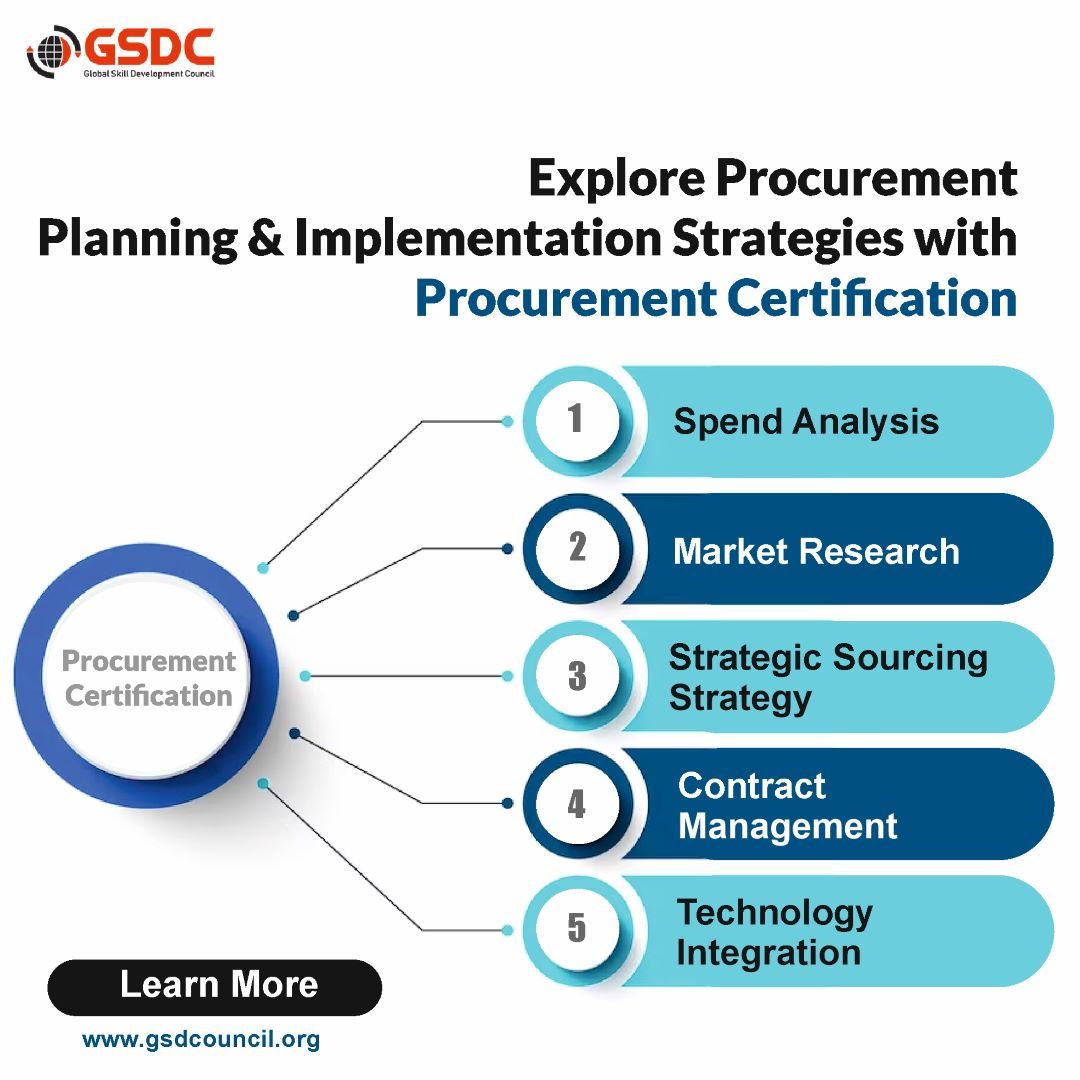Procurement certification enhance your professional credibility. They establish you as a trusted and respected professional in the field, providing confidence to employers, colleagues, and stakeholders. Certification signals your dedication to maintaining high standards and adhering to ethical practices.
Procurement planning and implementation strategies are essential for organizations to acquire goods and services efficiently, cost-effectively, and in compliance with relevant regulations. Here are key strategies for effective procurement planning and implementation:

Procurement Planning:
Needs Assessment:
Identify the goods and services required by different departments within the organization.
Conduct a thorough analysis to determine specific requirements, quantities, quality standards, and delivery schedules.
Spend Analysis:
Analyze historical spending patterns to identify opportunities for cost savings and supplier consolidation.
Categorize expenditures and prioritize areas for procurement focus.
Supplier Identification and Evaluation:
Identify potential suppliers through market research, industry directories, and networking.
Evaluate suppliers based on criteria such as capabilities, reputation, financial stability, and compliance with regulations.
Market Research:
Stay updated with industry trends, supplier capabilities, and pricing dynamics.
Understand market conditions and potential risks that may impact procurement decisions.
Risk Assessment and Mitigation:
Identify potential risks associated with procurement, such as supply chain disruptions, quality issues, and regulatory compliance.
Develop risk mitigation strategies to minimize potential impact.
Legal and Regulatory Compliance:
Ensure that procurement activities comply with relevant laws, regulations, and organizational policies.
Understand legal obligations related to contracts, intellectual property, and ethical sourcing practices.
Strategic Sourcing Strategy:
Develop a sourcing strategy that outlines how goods and services will be acquired.
Consider factors such as supplier selection, negotiation strategies, and procurement methods (e.g., competitive bidding, direct negotiation).
Supplier Relationship Management (SRM):
Establish a framework for managing relationships with suppliers.
Define expectations, communication protocols, and performance metrics to ensure productive and collaborative partnerships.
Procurement Implementation:
Supplier Selection and Negotiation:
Select suppliers based on a thorough evaluation process that considers quality, cost, reliability, and other critical factors.
Negotiate terms and conditions, including price, payment terms, delivery schedules, and quality standards.
Contract Management:
Draft and formalize agreements with selected suppliers, ensuring that contracts are clear, comprehensive, and legally binding.
Monitor contract compliance and performance, and address any deviations promptly.
Supplier Onboarding and Performance Monitoring:
Provide selected suppliers with necessary information, such as specifications, delivery requirements, and quality standards.
Monitor supplier performance against key performance indicators (KPIs) and address any deviations or issues.
Continuous Improvement and Innovation:
Regularly review and analyze procurement processes for areas of improvement.
Encourage innovation and explore opportunities for process optimization and cost reduction.
Technology Integration:
Leverage procurement software and technology to streamline processes, enhance visibility, and facilitate data-driven decision-making.
Implement tools for e-procurement, spend analysis, and contract management.
Change Management:
Implementing new procurement strategies may require changes in workflows and processes.
Communicate changes clearly to relevant stakeholders and provide training as needed.
By implementing these procurement planning and implementation strategies, organizations can optimize their procurement processes, reduce costs, enhance supplier relationships, and ultimately achieve operational excellence. These strategies ensure that procurement practices align with organizational goals and contribute to overall success.


No comments yet